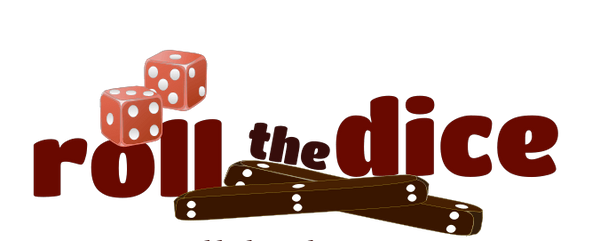How to play Taabla or Tabul Fale
Scroll down for video tutorial👇
Buy a Taabla or Tabul Fale Set Today!!
Introduction
Taabla (also known as Tabulfale or Tablan) is a traditional race game from the Uttara Kannada, Malnad, and coastal regions of Maharashtra and Goa. Players use semi-cylindrical wooden dice called "Taabla Kocchu" to move their Green and Red Birds strategically across the board, aiming to capture opponent birds and lock squares in the opponent’s home row.
Game Setup
-
Players:
- The game is played by 2 players or multiples of 2 in teams.
- Each player/team starts with 12 Birds (pawns).
- Player 1 controls Red Birds.
- Player 2 controls Green Birds.
-
Board Layout:
- The board consists of 4 rows of 12 squares (48 squares total).
- The bottommost row (1–12) is Red Birds' Home Row.
- The topmost row (48–37) is Green Birds' Home Row.
- The two middle rows (13–24 and 25–36) are shared for movement and captures.
Objective:
- Occupy the maximum squares in the opponent's Home Row to win.
- Capture as many opponent Birds as possible.
Game Board Reference
- Birds move in a zigzag pattern:
- Red Birds: 1 → 12 → 13 → 24 → 25 → 36 → 37 → 48.
- Green Birds: 48 → 37 → 36 → 25 → 24 → 13 → 12 → 1.
Board Layout:
| Green Home Row | Middle Rows | Red Home Row |
|---|---|---|
| 48–37 (Green) | 25–36, 24–13 | 1–12 (Red) |
Game Elements
-
Dice:
- Use 4 Taabla Kocchu (semi-cylindrical wooden dice) or 4 cowrie shells.
-
Scoring:
- Tabl (1+1): 2 (split as 1+1 or move 2 together) → Throw again.
- Eight (4+4): 8 (split as 4+4 or move 8 together) → Throw again.
- Twelve (6+6): 12 (split as 6+6 or move 12 together) → Throw again.
- Dogam (2) and Tigam (3): Move exactly 2 or 3 (no splitting allowed).
- Invalid throw: Pass the turn to the opponent.
Bird Movement
-
Starting:
- A Tabl (1+1) is required to move a Bird out of the Home Row.
-
Movement Directions:
- Red Birds: Move 1–12 → 13–24 → 25–36 → 37–48.
- Green Birds: Move 48–37 → 36–25 → 24–13 → 12–1.
-
Movement Rules:
- All dice scores must be used. If no move is possible, skip the turn.
- Birds can only capture opponent Birds in the middle rows or the opponent’s Home Row.
- Once a Bird reaches the opponent’s Home Row, it locks its position and cannot move further.
- No doubling: Two Birds cannot occupy the same square.
Capturing Opponent Birds
- Birds capture opponent Birds by landing on their square using an exact throw.
- A Bird can capture more than one Bird in a single turn if the score allows (e.g., splitting a Tabl or Eight).
- Captured Birds are permanently removed from the game.
- Example:
- A Red Bird with a Tabl (2) can capture two Green Birds consecutively by splitting the move (1+1).
Winning the Game
- The game ends when both players have locked as many Birds as possible in the opponent’s Home Row.
- The player who locks the most squares in the opponent’s Home Row wins.
- Capturing the opponent’s Birds contributes to the overall strategy and advantage.
Rolling the Dice
- Shake the Taabla Kocchu or cowries in your hands and tap them on the ground 2–3 times.
- Toss them into a designated area or marked circle.
- Calculate the score based on the dice fall and move Birds accordingly.
Key Rules Summary
- Use Tabl (1+1) to move a Bird out of its Home Row.
- Birds must follow a zigzag pattern across rows.
- Captures occur in the middle rows and the opponent’s Home Row.
- A Bird locks its square when it reaches the opponent’s Home Row.
- No two Birds can occupy the same square.
- All valid dice scores must be used during a turn unless no moves are possible.
